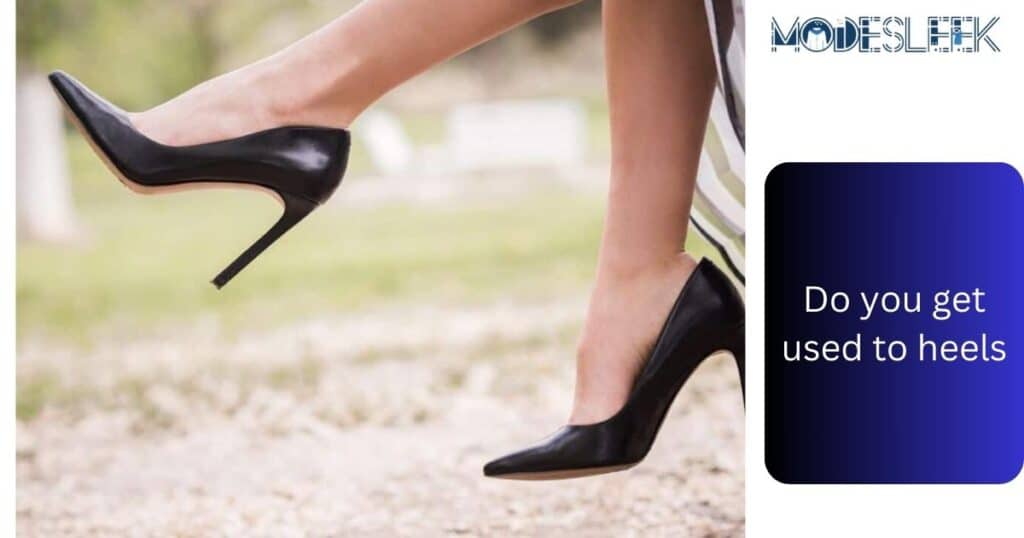Wearing heels can be daunting, especially if you’re not used to them. While high heels symbolize elegance for many, they can also cause discomfort and instability. However, with effective strategies and tips to help you adjust, wearing heels can become a more manageable part of your wardrobe.
Understanding the Challenge of High Heels
Before diving into the practical aspects, it’s essential to understand why many people struggle with wearing heels. High heels alter your natural posture, shifting your center of gravity. This change can strain your feet, calves, and back, leading to discomfort. However, with practice and the right shoes, you can adapt to wearing heels, enhancing both your style and comfort.
How Long Does It Take to Get Used to Wearing Heels?
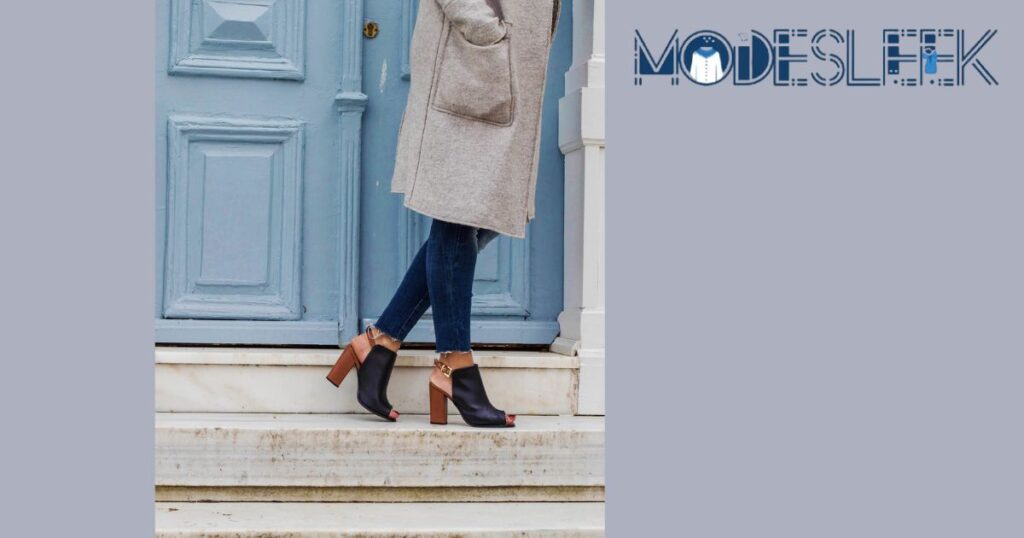
The time it takes to adapt to wearing heels varies significantly from person to person. Here are some factors that can influence your adjustment period:
- Frequency of Wear: If you wear heels often, your body will adapt more quickly.
- Heel Height: Starting with lower heels can ease you into the transition.
- Shoe Fit: Properly fitted shoes can reduce discomfort and expedite adaptation.
Typically, it can take anywhere from 3 to 5 days to start feeling comfortable in a new pair of heels. However, if you’re completely new to high heels, consider allowing 3 to 4 weeks to fully adjust.
What Type of Heels Are Easiest to Walk In?
Choosing the right heel is crucial for comfort and ease. Here’s a breakdown of some types of heels:
- Block Heels:Block heels are an excellent choice for anyone seeking both style and comfort. With their wider base, they provide better stability compared to traditional stilettos, reducing the risk of ankle twists or falls. This design allows for a more natural walking motion, making it easier to maintain balance throughout the day.
- Whether you’re navigating the office or dancing at a party, block heels can help you feel more secure while still looking chic and fashionable. Plus, they come in various styles, from casual to dressy, making them a versatile addition to any wardrobe.
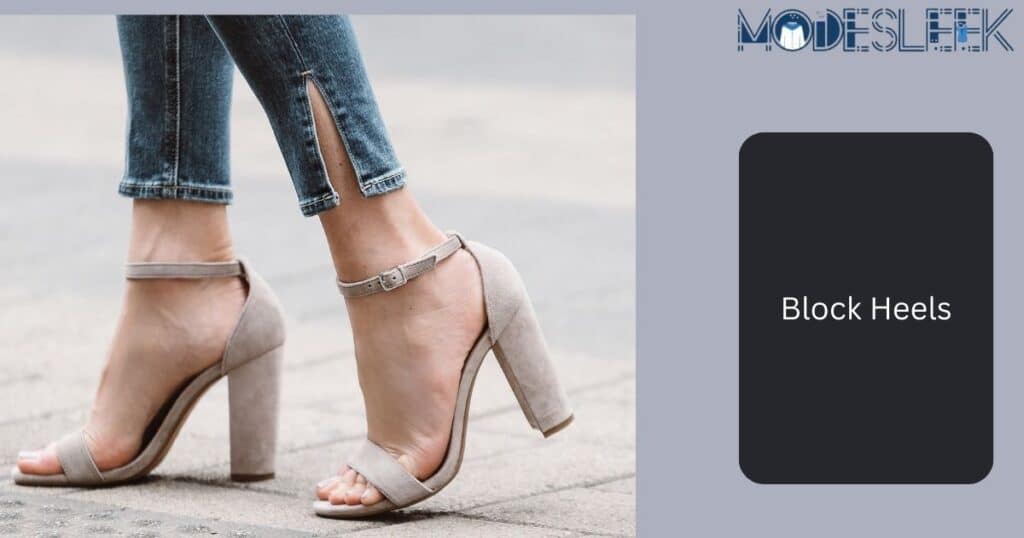
- Wedges: Wedges are a great option for those looking for both height and comfort. The way they’re designed allows your weight to be spread evenly across the foot, unlike stilettos that focus pressure on a small point. This makes wedges much easier to walk in and perfect for longer periods, whether you’re at an event or spending the day on your feet. Plus, they offer stability, which reduces the risk of wobbling or discomfort.
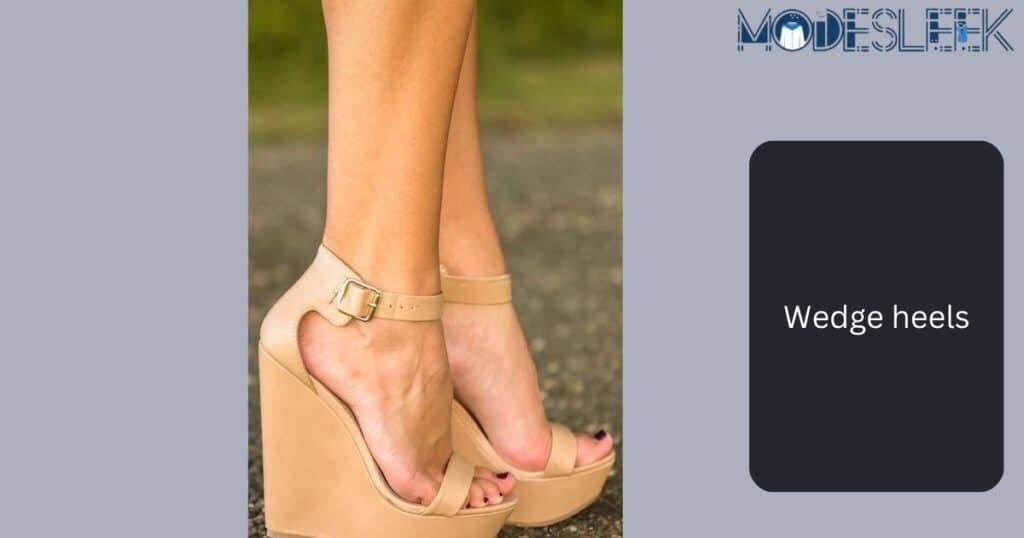
- Kitten Heels: Kitten heels are a perfect starting point if you’re new to wearing heels. Their low height makes them much easier to walk in, providing a subtle lift without the pressure of high heels. Because they’re less intimidating, they help you build confidence and balance, making it easier to eventually transition to taller heels if you choose. Plus, they’re stylish and versatile, great for both casual and formal outfits.
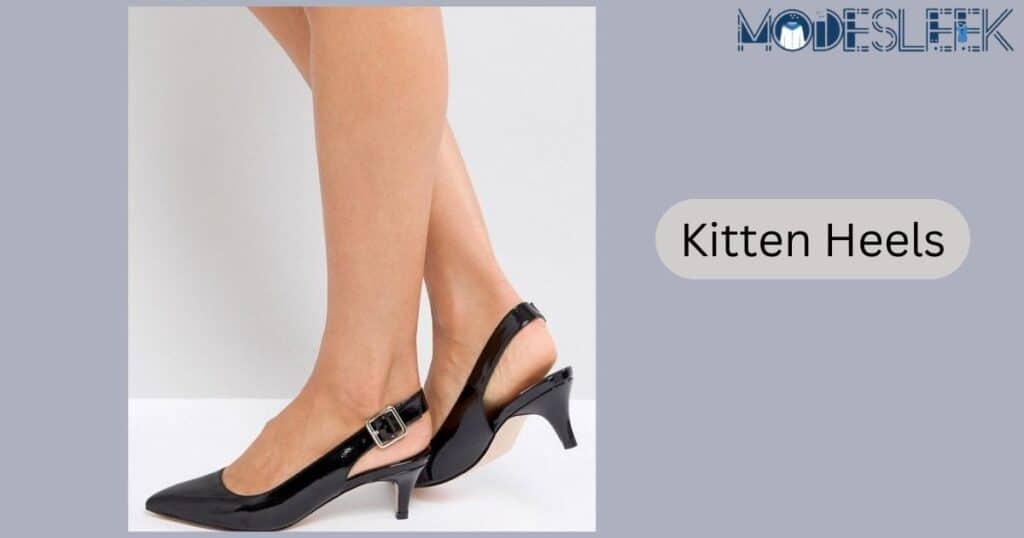
Here’s a quick table:
| Heel Type | Stability | Comfort Level | Ideal For |
|---|---|---|---|
| Block Heels | High | High | Daily wear, casual outings |
| Wedges | Medium | High | Events, outdoor occasions |
| Stilettos | Low | Medium | Formal events, short durations |
| Kitten Heels | Medium | High | Office wear, casual outings |
How to Get Used to Walking in High Heels
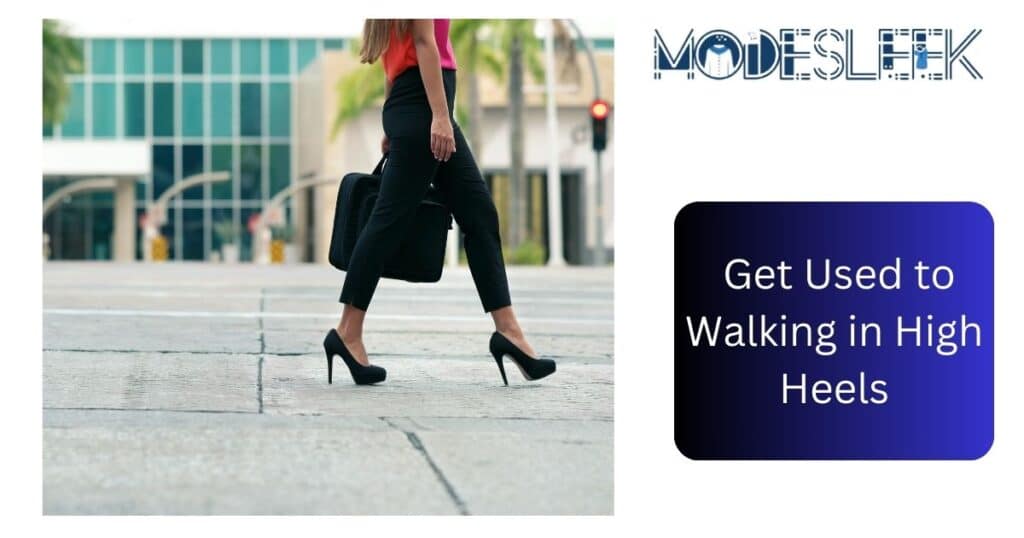
Adjusting to walking in stilettos requires practice and the right techniques. Here are some effective tips for wearing heels:
- Start Small: Begin with a lower heel and gradually increase the height as your comfort level improves.
- Practice at Home: Wear your heels around the house to familiarize yourself with walking in them.
- Foot Placement: Focus on placing your heel down first, followed by your toes. This technique improves stability and balance.
- Maintain Posture: Keep your back straight and shoulders back to help distribute your weight evenly.
How Can I Wear Heels Without Pain?
Wearing heels for extended periods often leads to discomfort. However, with the right strategies, you can reduce pain significantly. Here are some high heels comfort tips:
- Choose the Right Fit: Ensure your heels fit snugly without being too tight. A well-fitted shoe minimizes friction and discomfort.
- Opt for Quality Materials: Leather shoes typically mold to your feet better than synthetic materials, leading to improved shoe fit and comfort over time.
- Use Padding: Investing in heel pain prevention products, such as cushioned insoles, can provide additional support and comfort.
Pain-Preventing Products
Various products can aid in alleviating discomfort while wearing heels. Here’s a list of effective options:
- Ball of Foot Cushions: Gel pads that provide shock absorption under the ball of your foot.
- Gel Heel Liners: Prevent blisters by cushioning the back of your heels.
- Arch Inserts: Provide support for high arches and help with weight distribution.
- Toe Guards: Silicone protectors that reduce friction between your toes and the shoe.
How Long Does It Take to Break Heels In?
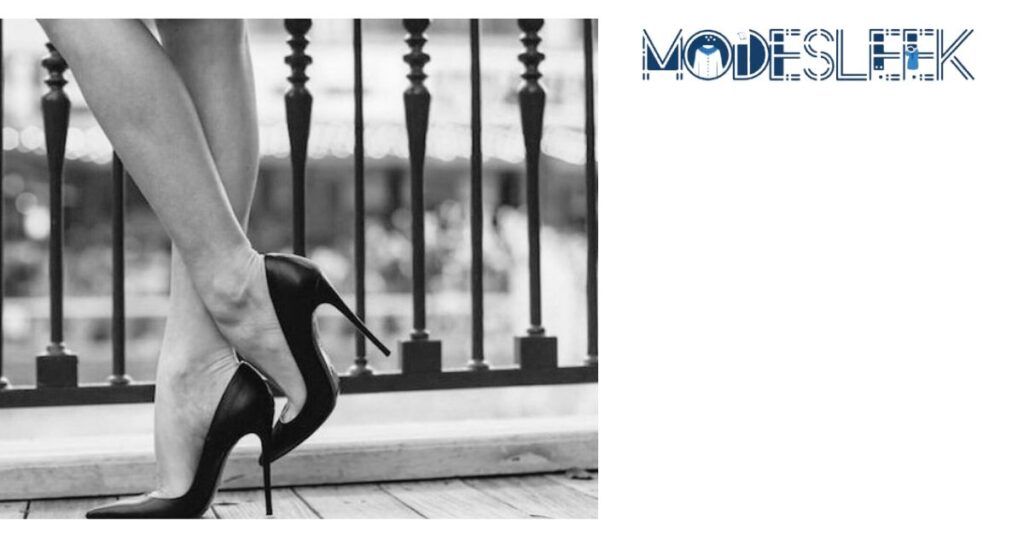
Breaking in new heels is a crucial step in achieving comfort. On average, this process can take 3 to 4 weeks with regular wear. Here’s a breakdown of the factors influencing this timeline:
- Material: Leather often takes less time to break in compared to synthetic materials.
- Design: The construction and style of the heel can also affect the break-in period.
How to Break in Heels
Here are some effective heel breaking strategies to ensure a comfortable fit:
- Wear Them at Home: Start with short intervals of 30 minutes to an hour a few times a day.
- Use Socks: Wearing thin socks can help stretch the material gradually.
- Gradually Increase Time: As you grow accustomed to the heels, extend the duration of wear.
Do’s:
- Wear for short intervals initially.
- Gradually increase wear time.
- Use padding in high-friction areas.
Don’ts:
- Don’t wear them for long durations right away.
- Avoid forcing the shoe to fit by using heat or water.
- Don’t give up; some shoes just need more time to adjust.
The Importance of Foot Health and Heels
Maintaining good foot health and high heels requires awareness and care. High heels can contribute to various foot issues, including:
- Bunions: A painful deformity caused by pressure on the toes.
- Plantar Fasciitis: Inflammation of the tissue connecting the heel bone to the toes.
- Achilles Tendonitis: Pain and stiffness in the back of the heel.
Alternatives to High Heels
For those who struggle with heels, various alternatives offer style without discomfort. Here are some popular options:
- Stylish Flats: These come in various designs and can complement most outfits.
- Low Heeled Shoes: These provide a bit of height without compromising comfort.
- Platform Shoes: They give the appearance of a higher heel while maintaining comfort.
Improving Balance in Heels
Improving your balance is essential for comfortable heel wear. Here are some exercises to enhance your stability:
- Yoga: Poses like Tree Pose improve balance and strength.
- Ballet: Engaging in ballet can refine your footwork and posture.
- Core Strengthening Exercises: A strong core helps maintain stability when wearing heels.
Tips for Wearing Heels Effectively
Here are some additional tips:
- Here are some additional tips for wearing heels comfortably:
- Limit Duration: It’s important not to wear heels all day long, especially if you’re not used to them. Consider alternating between heels and more supportive footwear throughout the day. This can help reduce strain on your feet and lower legs, giving your feet a break and preventing fatigue. If you know you’ll be on your feet for a long time, plan to switch into flats or supportive shoes during breaks to help alleviate discomfort.
- Choose the Right Heel Type: When selecting heels, think about both your outfit and comfort. Heels come in various styles, and some are more comfortable than others. Look for features like cushioned insoles, wider bases, and lower heights to enhance comfort. Stilettos might be stunning for a formal occasion, but if you know you’ll be on your feet for several hours, block heels or wedges may be a better choice.
- Stay Hydrated: Staying hydrated is often overlooked but plays a crucial role in foot comfort. Drinking enough water helps prevent foot swelling, which can occur after long periods of standing or wearing heels. When your feet swell, they can feel cramped and uncomfortable in your shoes, making it harder to walk. Aim to drink plenty of water throughout the day, especially if you plan to wear heels, to help keep your feet feeling comfortable and reduce the likelihood of swelling.
FAQs
How long does it take to get used to wearing them?
For most people, it takes 3 to 5 days of regular wear to feel somewhat comfortable. However, if you’re completely new to wearing them, it may take up to 3 to 4 weeks to fully adjust. Factors like height, frequency of wear, and shoe fit can influence the adaptation period. Start with lower styles and gradually increase the height as you become more comfortable.
What type of shoes are easiest to walk in?
Block styles are the easiest to walk in due to their wide base, offering more stability and reducing the risk of wobbling. Wedges are another great option since they distribute weight evenly, making them comfortable for extended wear. Kitten styles, with their shorter height, are perfect for beginners, providing a more manageable introduction. Stilettos, while stylish, require more balance and are best for short durations.
How can I wear them without pain?
To avoid discomfort while wearing these styles, make sure your shoes fit snugly but aren’t too tight. High-quality materials like leather mold to your feet over time, offering more comfort. Adding cushioned insoles, gel liners, or arch support can prevent common pressure points from causing discomfort. Avoid standing or walking for long periods, and take breaks to give your feet some relief.
How do I break in new shoes?
Breaking in new pairs involves wearing them at home for short periods, around 30 minutes to an hour, to allow your feet to adjust. Use thin socks during the break-in process to stretch the material gently without causing blisters. Over time, you can gradually increase the wear time as the shoes become more comfortable. For extra snug pairs, consider using a shoe stretcher or taking them to a cobbler for professional stretching.
What are some alternatives?
If traditional styles are too uncomfortable, stylish flats can be a chic alternative. Look for embellished or pointed-toe designs to maintain a polished look. Low-heeled options (1-2 inches) offer a balance between comfort and style, while platform designs give you the appearance of height with less strain on your feet, as the platform provides more support and distributes pressure evenly.
Conclusion
Wearing these styles can be tricky, but with practice and the right pair, it gets easier. Start with shorter options, make sure they fit well, and add padding for comfort. Break them in slowly by wearing them around the house before stepping out for longer periods.
It may feel uncomfortable at first, but choosing the right type and fit can make a big difference. Block styles and wedges are great for beginners because they offer stability and comfort. To avoid pain, break them in gradually, use cushioned insoles, and always start with shorter wear times until you’re fully adjusted.
These stylish options can elevate your look, but they require patience and practice. Start with lower options like kitten styles or blocks, which are easier to walk in and provide more balance. Gradually increase the height as you get comfortable, and remember to keep your posture straight and your steps steady. Comfort is key, so opt for quality shoes and use inserts or padding to reduce foot strain.

Lily Rose is an experienced website content writer with over 5 years of expertise in crafting engaging and informative content. She runs her personal blog, sportrevup.com, where she shares insights and updates on a variety of topics. Lily is dedicated to delivering high-quality content that captivates and informs her readers.

